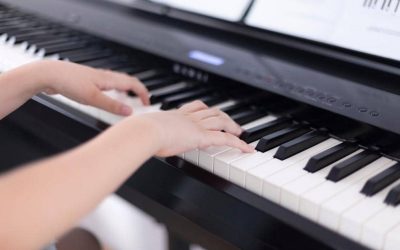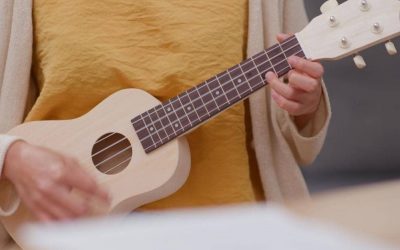If you develop an interest in playing the piano, you will also quickly realize that there is going to be quite a bit that you have to learn. Of course, you are going to have to learn the basic building blocks of music as well as learning chords, scales, and so on. However, before you can even begin figuring out which keys play which notes, you will want to make sure that you have the hands for the job. As most people know, playing the piano effectively and efficiently requires one to have hands that are large enough or, at the least, wide enough, to be able to hit keys far apart. If you have ever watched the best pianists play, you have likely noticed that they tend to have large hands. This will, understandably, beg the question of just how important hand size in piano really is.
There is no doubt that having longer fingers and wider hands is going to make playing the piano considerably easier, especially since the most complex songs that you will encounter will have your hands spanning across several octaves. No matter how talented or nimble someone might be, it is an undeniable fact that the standard average for octave placements on pianos is going to be about 6.7 inches. If you are playing a song that features several octaves, then you are going to have to move your hands across that space efficiently and fluidly if you want to have a smooth sound. Even if one is talented in doing this, having larger hands is going to make all the difference.
Barring any talent or expertise, a benchmark that many people have to consider for playing more complex songs is the measurement of 8.5 inches. This is the length between playing a tenth note in a scale or moving between different octaves quickly during a song. Anyone who does not have a hand span of 8.5 inches is going to have some amount of discomfort trying to play more complex songs or that person is going to have to put in more work toward being able to move hands quickly while still being able to hit all of the correct notes.
Do keep in mind that this isn’t to say that people who have smaller hands cannot learn how to play the piano. There are plenty of talented pianists who have smaller hands and are able to make accommodations to make their music work. For some people, this may involve a considerable amount of time practicing how to move a hand across a keyboard without affecting how the notes are hit; for other people, this might involve purchasing a keyboard that accommodates smaller hands. When all is said and done at the end of the day, hand size absolutely matters in piano and an optimal hand size to have is going to be at least 8.5 inches, although this number does not completely exclude those who have a smaller handspan from being able to play the piano effectively.
Playing the Piano with a Small Handspan
While the size of one’s hand absolutely makes a difference in how easy it is to play the piano, there are still plenty of ways that people with smaller hands can learn how to play the piano just as effectively and efficiently. For instance, children will almost always have handspans that are smaller than 8.5 inches; however, when a child is learning how to play the piano, they traditionally use a full-size keyboard. If you do not necessarily want to purchase specialized instruments that are meant to be easier for people who have smaller hands, it will mean that you have to put more effort and practice into being able to move your hands more quickly across the keyboard. Depending on what your total handspan is, it may also mean that you will simply be unable to play songs that have a large range of notes. One thing that you may want to keep in mind is how large your range of notes is so that you can stick with songs that you know you would be able to play.
So, what about purchasing pianos that accommodate smaller hands? There are a few different ways that you can do this. For some people, particularly children who are first learning to play the piano, it will be a good idea to purchase a piano made for children. Not only will these be easier to afford than grand pianos that you can find at a music store but it will also help your child learn how to play the piano without being discouraged about not being able to reach the keys due to a smaller hand size. There are plenty of manufacturers who make smaller pianos for children. These pianos are often smaller both in the number of keys on the piano and with the width of the keys. Typically, these pianos will have anywhere between 25 and 54 keys, compared to the traditional 88-key keyboards.
If purchasing a child-oriented piano is not suitable for your situation, a similar but slightly different solution will apply to you. Consider the fact that many child-oriented pianos are designed to have smaller keys on the piano so that a child will be able to easily hit the notes needed for songs. The same concept will apply to pianos that are made for people who have smaller hands who want to learn the piano. These pianos may be more difficult to find than traditional pianos but if you want to be able to learn how to play the piano effectively without having to worry about the size of your hands getting in the way, it will be well worth the effort to try and find this kind of piano.
What you will want to look for is a piano that has alternatively sized keys. There are also keyboards that can be fitted to traditional pianos that can provide the same effect of being able to offer the same joy of playing a piano without the stress of being unable to hit the keys. What you will want to look for is a keyboard that has a “5.5 7/8 reduced size” measurement on it as these keyboards are specifically designed to accommodate people who have small hands.
On top of this, you might be surprised about how much practice can affect your ability to stretch your hand. Of course, if your natural handspan is notably shorter than 8.5 inches, then there’s a good chance that even with the necessary practice, you will not be able to reach that optimal length. However, you may be able to hit the very edges of the keys that you need to play. When you practice enough to be able to do this efficiently, it will seem as if you never had an issue with the size of your hand in the first place. There are quite a few resources that you can find that will explain in great detail the process that you need to go through in order to train your brain to maximize the use of your hand so that when it is time to play the piano, you can hit the keys necessary to complete your favorite songs.






